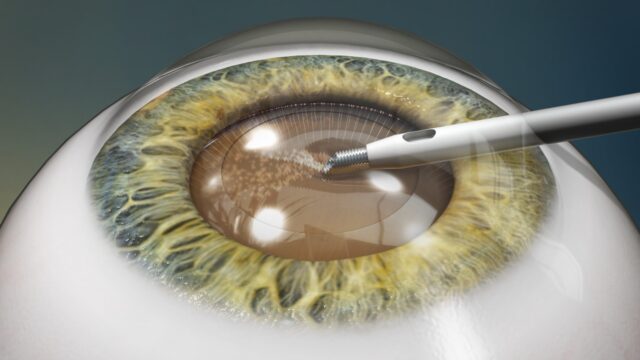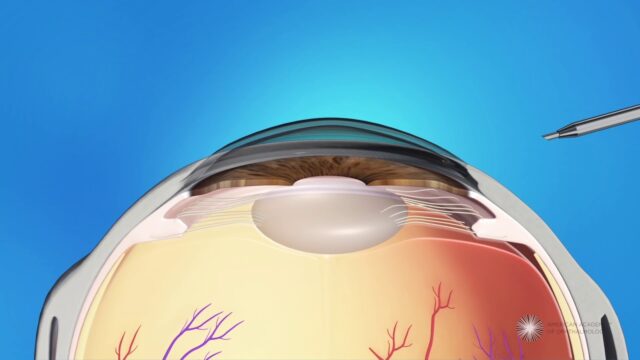
Most people choose laser eye surgery to treat common vision problems and reduce their need for glasses.
However, for a variety of reasons, some people cannot get LASIK. Why is that? Presbyopia – a condition that certain patients over a certain age may get as they mature. If you can’t or don’t want to get LASIK you can try RLE. Your age, current visual issues, refractive flaws, and goals will all affect the advantages and disadvantages of refractive lens exchange, but in most cases and for most patients, this can be a good go-to starting point for your problem. Keep on reading to discover all there’s to it.
What does the procedure look like?

In most cases, a new lens can be surgically implanted in around 15 minutes during an outpatient operation.
Each eye receives treatment at its own pace, often one week apart.
Since numbing anesthetic drops are used during RLE, most patients experience a very little discomfort, and their eyesight improves rapidly. Nothing is too uncomfortable or unbearable for most patients.
It may take a few weeks for the full effects of refractive lens exchange to become apparent, and in the meantime, you may notice visual issues such as cloudy vision, halos, and brightness, or a “scratchy” sensation in your eyes as they heal. However, assuming you’ve followed your eye surgeon’s post-op instructions to a tee, you should be good to go back to work and get behind the wheel within a week. This is why it is important to book someone skilled within the field.
What are the pros of it? Top 4 to consider
1. Better vision
A rising number of people are still considering laser vision correction (LVC) as an alternative to the usage of traditional corrective lenses for vision correction.
But unlike refractive lens exchange, LVC might not deliver the best visual quality and a long-lasting fix.
This is due to the fact that intraocular lenses, which are used to replace the natural lens of the eye in RLE, do not deteriorate over time and are designed to offer the best vision quality possible. If you have tried it all, maybe this is your next move to make.
2. Not a burden
The necessity for corrective lenses, which can lead to problems like headaches, eye strain, and careful handling of specific types of lenses, will be eliminated after RLE.
Therefore, RLE provides increased ease without the risks associated with other types of corrective lenses. It is not a burden to do, follow up or maintain the results + the treatment is not pricey either.
PS: It is crucial to remember that RLE might be your only choice or that, among other advantages, it might help you improve your eye health.
3. Works for most people

RLE is the most practicable surgical procedure when there is a severe refractive defect or an unhealthy cornea.
In such circumstances, it could be challenging to achieve a successful result from alternative vision correction techniques.
Your doctor could suggest that you get RLE if there is no other option to improve your vision due to the dangers involved with other types of eye surgery. Because underlying eye diseases might vary in severity, the benefits of RLE may differ from person to person (s).
4. No need for an extensive recovery time
One of RLE’s primary benefits is the short treatment time—typically under 30 minutes—and the speedy recovery it promotes.
There is evidence that many people can go back to work the day after surgery.
Many people report an immediate improvement in their eyesight, especially when done by a skilled doctor.
What are the cons?
Are you worried about cons quite a lot? Both the advantages and potential risks of refractive lens exchange should be discussed with patients before the treatment.
Your vision evaluation at your chosen clinic or your chosen eye center will include a thorough discussion of the potential hazards associated with corrective eye surgery.
This category includes the following things:
Certain diseases of the cornea and other ailments that prevent healing disqualify patients for therapy.
The formation of glare or halos around lights is one of the most frequent side effects of a refractive lens exchange.
Some patients get a brief rash around their eyes, while others experience a brief annoyed expression in their eyes.
While dangerous, infections and retinal detachments are extremely uncommon side effects + everything tends to go away so quickly and smoothly.
What are the risks?

- Vitreous loss or capsular rupture during surgery can enhance RD risk.
- Vitreous can slide forward after a natural lens is removed and a thinner IOL inserted, putting strain on the retina.
- A posterior vitreous detachment reduces the likelihood of RD after RLE surgery.
- Younger RLE patients are at risk for RD after surgery, whereas older patients are protected.
- Refractive surgery risks and advantages must be carefully weighed.
- The patient can decide whether to undergo these operations after reading about them. You should know that insurance companies don’t cover refractive lens exchanges.
- This is one of our most revolutionary refractive operations because it treats the most prescriptions and ages.
- With RLE, patients can also use a multifocal intraocular lens to address presbyopia (IOL).
- A professional-recommended OD should feel confident in finding a good candidate for a refractive lens exchange after assessing the benefits and downsides of each refractive alternative for the patient in front of them.
Want to get the surgery?
Does all of this sound interesting to you? Laser-assisted RLE surgery is a precise treatment that’s highly customized to each patient. Nowadays people are getting it done frequently and more often than ever, mostly because of its minimal downtime + practicality. You should book a doctor or a team that is skilled and trained, as well as someone who can answer all of your questions. For the best results of refractive lens exchange results sharpe-vision.com should be your go-to. Get in touch and look at their pricing, all options, and just know that you’re in safe hands.













